Now for the last installment, the foliage. This is the most tedious part of the process, and it is also the most time consuming. I usually take a week or 10 days to do the bulk of the foliage and about another 3 or 4 days to do all of the detail touchup work.
FOLIAGE
There are so many choices to making the leaves and flowers that I can't even begin to touch the surface. All of the old model railroading materials such as lichen and foam clusters are still available but not used by many diorama makers, especially not of the quality of the that I see in the photos here, but they are the easiest to find. I have recently found products like Selkirk Scenery which is a huge step up from the old style model leaves and looks great in smaller scales but for larger scales it still has limitations. For our purposes we want each plant to be as real as possible, on my dioramas I want someone who knows plants to be able to look as a model and identify the plant down to the genus if not the species.
To get this type of realism I have watched and learned from dollhouse sculptors, diorama makers for museums, and taxidermists, all of whom treat each plant as if it was a figure on the diorama. Most of the model makers I have found were more then willing to help me with materials lists and suppliers, since learning I have come across many tricks to making different types of leaves, while out I always look for materials that look like a particular leaf or can be used as a template to create a compound leaf. It just takes some luck to spot something that can make a totally new leaf type or make a different tree easier to complete.
MATERIALS
There are several types that I have found to be much superior to any of the typical modelling products. The most useful for diorama making follow, in order of how good they look on the finished sculpture:
Preserved natural foliage
laser cut paper
hand cut paper
clay
plastic plants and silk plants
I'll take each one in the order above, starting with preserved natural foliage. There are differences between dried and preserved so make sure you get preserved, it will last for years while dried foliage will eventually fall off the stem. Michigan Toy Soldier and Military Miniature Warehouse both sell the most versatile preserved foliage, sesame bloom. It is packaged by a couple of different brands, Hudson and Allen has a green shrubbery package, and Joefix Studios also sells sesame bloom packaged. The other types that I have found useful are lepto for any round shaped leaves, Imported lepto for things like oliander and bamboo because it has lance shaped leaves, misty for pines and other type of evergreen foliage. Here is a photo of some of the different types of preserved foliage.

I buy most in natural colors like greens and browns, a few in bright colors like lavender, yellow or red, I also sometimes buy white or bleached so I can color it the colors I need. The bright colors make fairly good flowers for large bushes or trees in smaller scales, and great foliage for trees like plums or maples in fall colors.
Next on the list is laser cut paper. Many of you are probably familiar with the Noch or ScaleRama laser cut kits. There are other brands, too many to list but they all have some that are perfect and others that aren't so good, but pick and choose and you will come away with some fantastic plants for the diorama. For palm fronds the best I have ever found is by Hart of the South. His fronds are too small for my scale but perfect for 1:35 or smaller scales. I have all of mine custom sized for my diorama, it costs a little more but is worth it for the final product. Here are some of my palms that are done in larger scale.
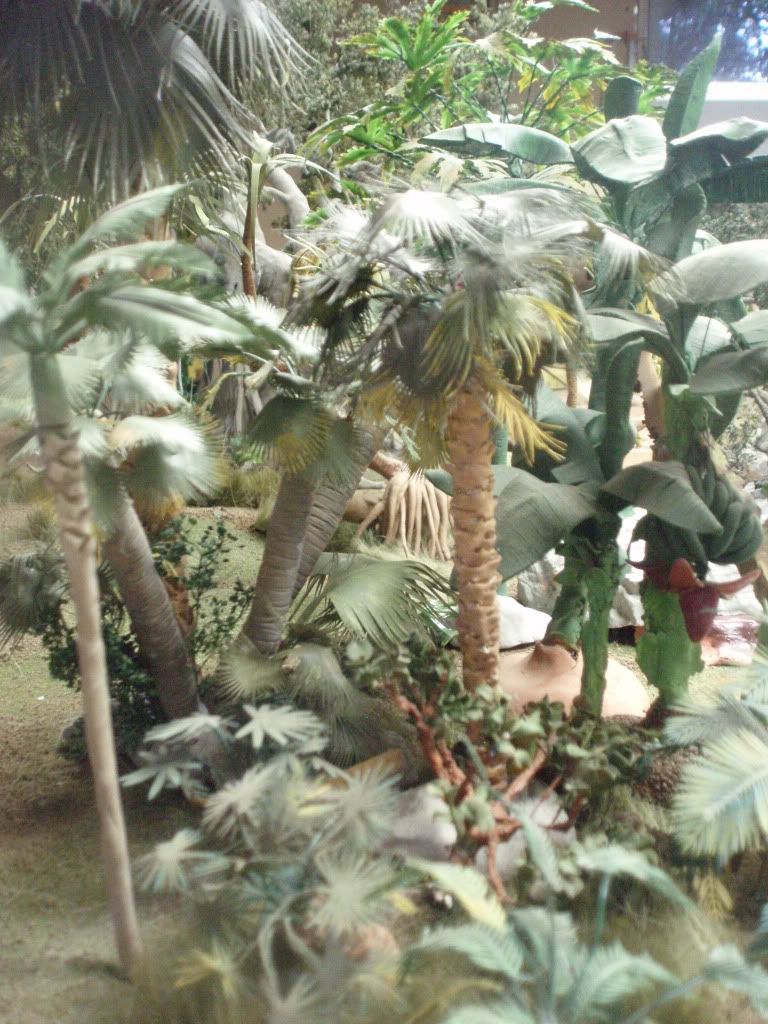
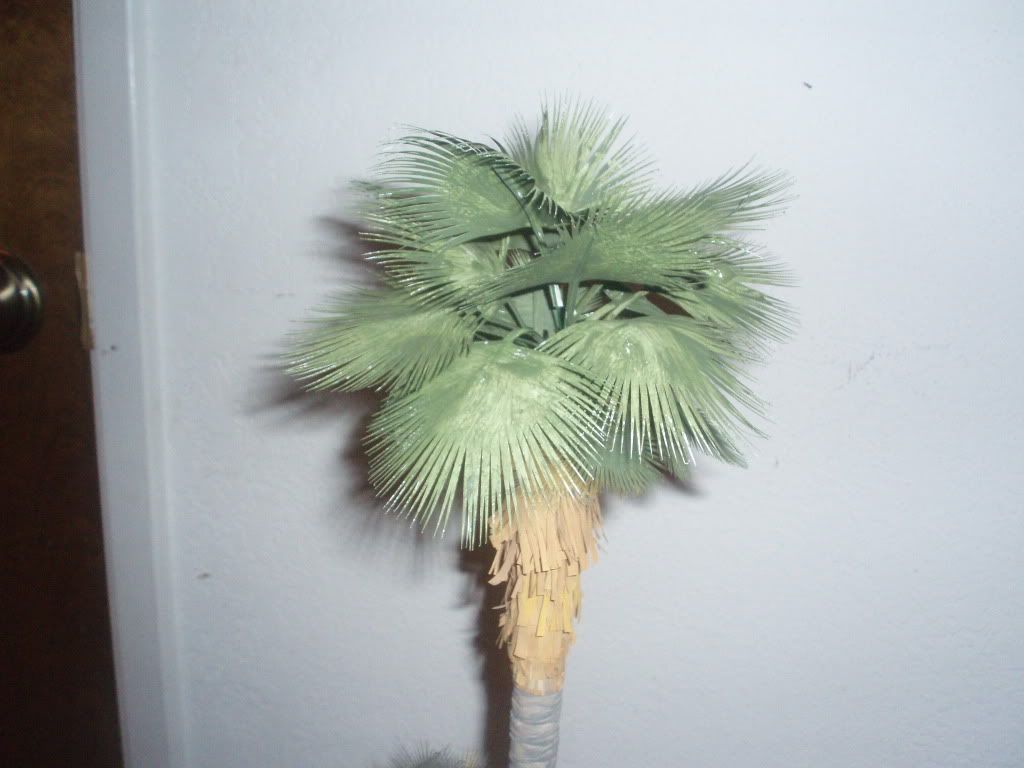
Here are some ScaleRama laser cut sugarcanes, I use them for reeds by the waters edge.

Hand cut paper is also very good for larger leaves and fronds, I use them for palm fronds and banana leaves. I have also used them for compound leaves for different ivy and papaya but this is very time consuming and I would not do them again if I didn't have a substitute. Here are a few plants I made using paper cut leaves, the first is an umbrella plant, the second is a pair of large leafed dragon trees, they are on the left side of the photo.


Here is a paper cut date palm,
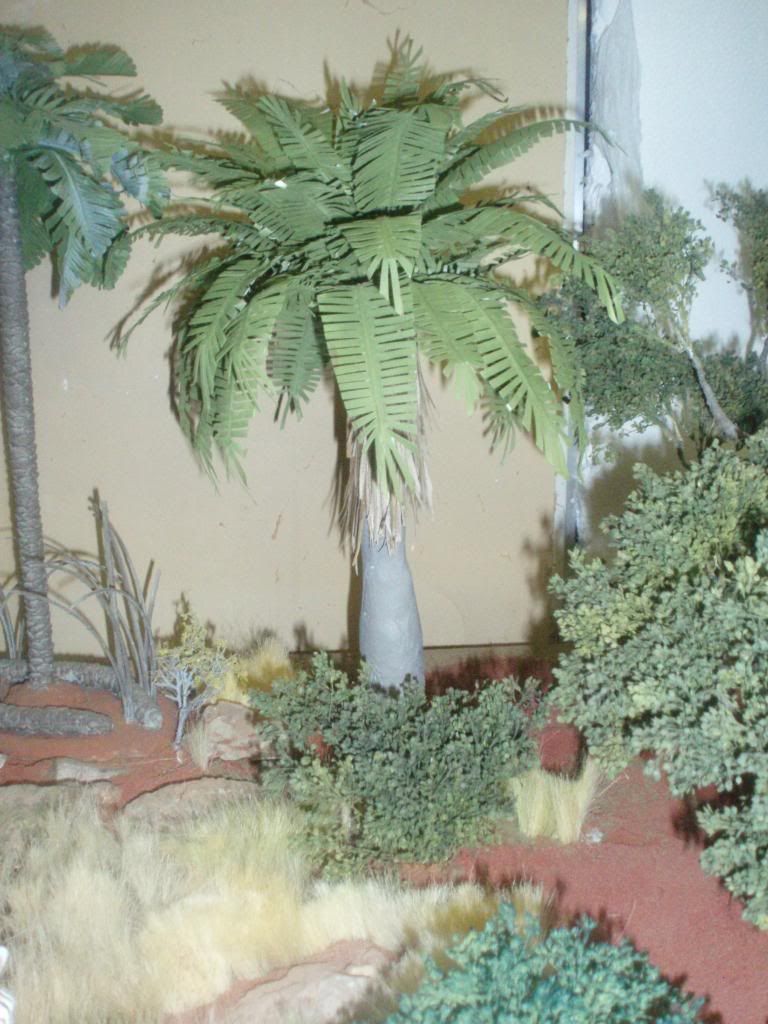
and a paper cut pandanus tree

I also use clay to make some of the plants, here is a photo of a king protea that I made using clay for the stems and branches, sesame bloom for the foliage, and paper clay for the flowers.
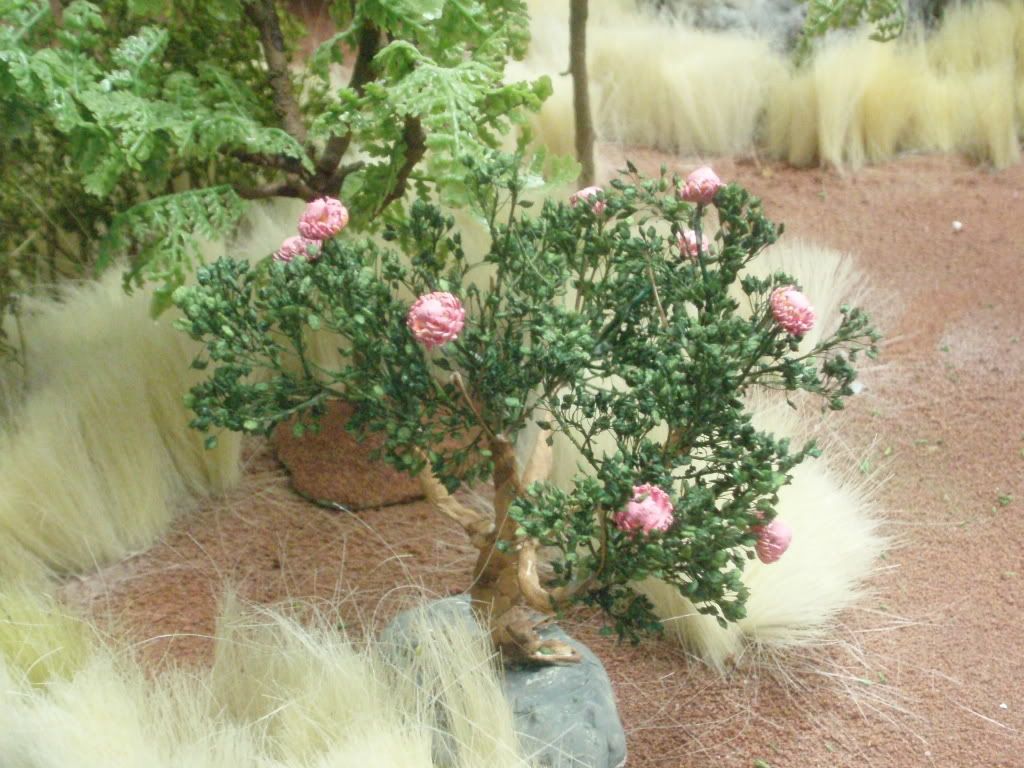
Here are two different flowers made by a pair of sculptors who do miniature gardens out of clay, the lotus is done by a woman in Thailand named Pim Sudari, she has helped me with tutorials and clay cutters for making my own flowers and clay leaves and the second photo below is a bird of paradise by one of her friends who I don't know personally but is another great sculptor.
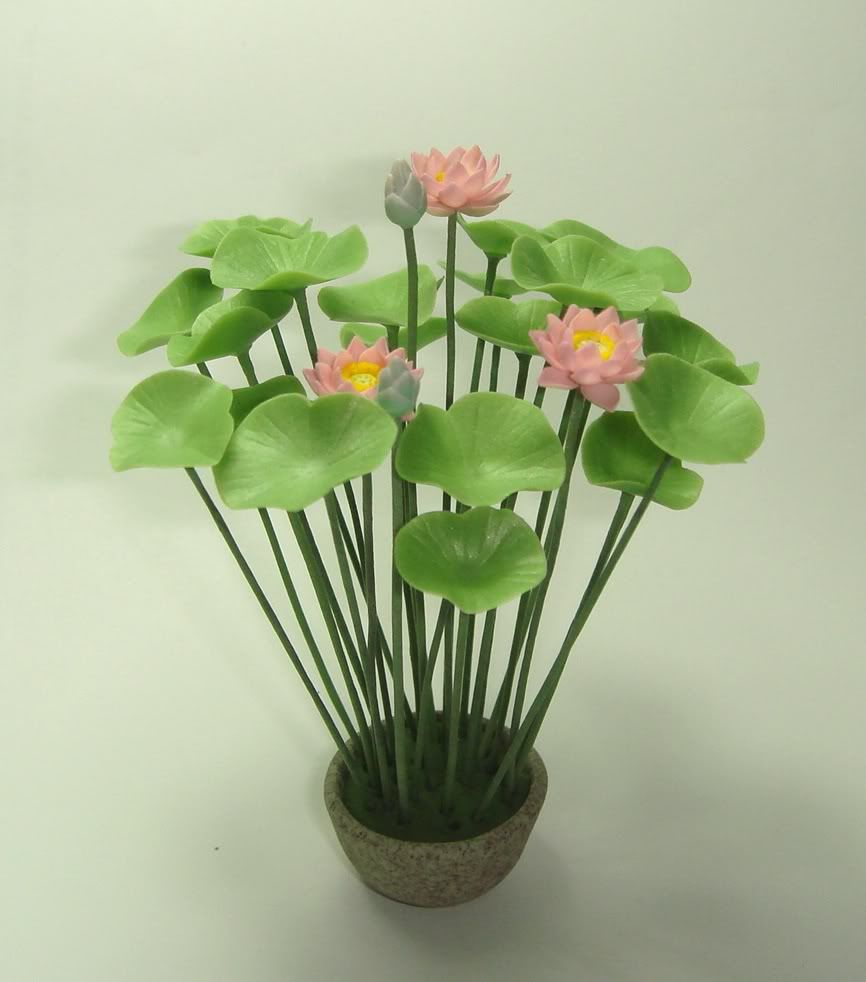

Finally I use plastic and silk plants from places like Micheal's and Joanne's, both are craft stores found nation wide. I don't use these much, for certain plants like momosa trees or papaya, here is a photo of the the first papaya I made, since this one I have done much better on the trunk and branches but I don't have a photo of it by itself.
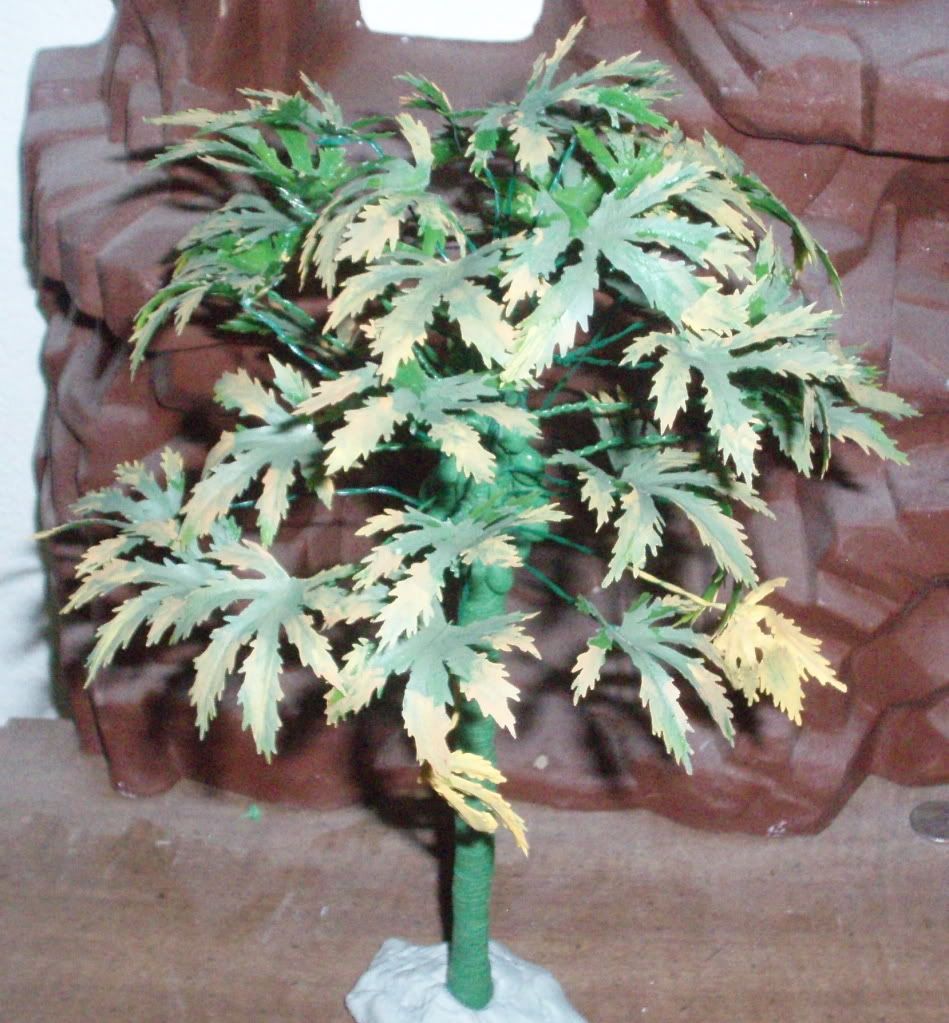
ADDING THE FOLIAGE
To attach the foliage is not rocket science, I just use PVA or super glue and start at the bottom and work my way around the tree and up. A couple of suggestions, first smaller clumps of foliage take a lot longer to finish but look so much better, here is a photo of some of my first trees, I was impatient and tried to finish quickly by tying the sprigs together then gluing them to the branches, the look leaves much to be desired.

By separating the foliage into smaller pieces and gluing them on in small amounts it looks so much more natural. Here is some of the sesame bloom cut into small pieces and the tree from the first two posts, first a close up before the final detailing of the outer branches,


and the tree with the foliage attached and ready for the diorama.
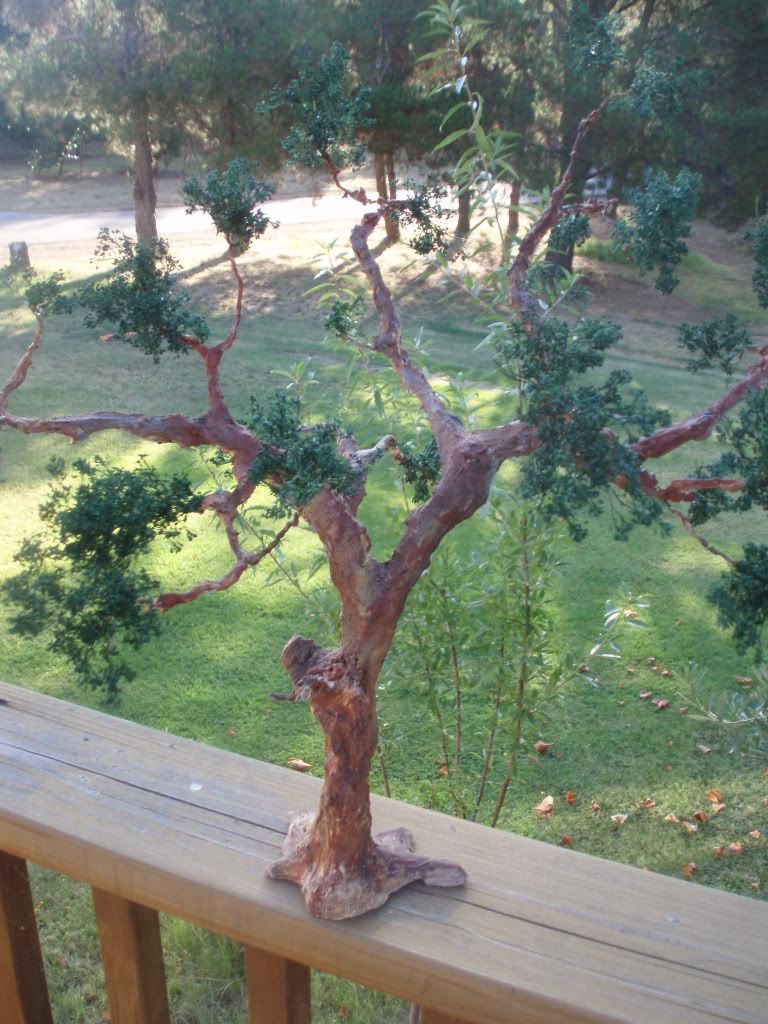
I hope all of you who followed along can use this to help with your dioramas and sculptures, if you have any tricks or ideas to add please do, and if you have questions I will try my best to answer them.